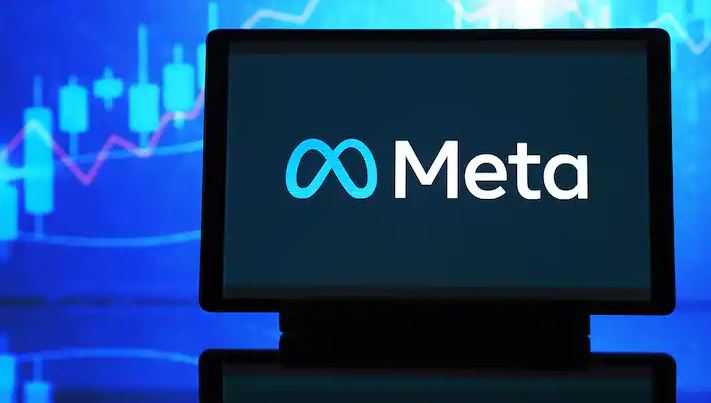Meta’s ambitions in artificial intelligence have reached a new high CEO Mark Zuckerberg recently disclosed that Meta Llama AI Models, particularly the anticipated Llama 4 AI model, are being trained on a GPU cluster surpassing any other reported setup. During an earnings call, Zuckerberg highlighted that Meta is investing heavily in GPU resources, aiming to develop a large language model that would set new standards in the industry. This scale, Finetune, fits well with Meta’s mission compared to the other companies such as OpenAI and Google which are working on different styles of AI models. Meta Llama AI Models that are patronizing researchers, startups, and developers with a powerful, versatile, and cost-effective tool are expected in early next year 2024.
Unprecedented Scale in AI Training
The GPU cluster supporting Meta Llama AI Models exceeds 100,000 Nvidia H100 GPUs, a monumental increase in computing resources compared to previous projects. Zuckerberg asserted, “We’re training the Llama 4 models on a cluster bigger than anything I’ve seen reported.” With this expanded computing power, Meta Llama AI Models aim to improve the model’s speed, accuracy, and reasoning abilities. This increase in computational scale is a direct reflection of Meta’s commitment to leading AI development, setting a high benchmark for advanced language models.

Other tech giants, including Elon Musk’s xAI, have pursued similar paths, with Musk announcing a GPU cluster involving around 100,000 H100 GPUs earlier this year. Although Meta appears to have taken the lead in computing power, the race for the most powerful AI infrastructure remains fiercely competitive. Advanced AI clusters like Meta’s are expected to contribute significantly to language understanding and multi-modal AI applications, which could redefine the capabilities of Meta Llama AI Models.
Open Source Strategy: Advantages and Challenges
Meta’s open-source approach to AI makes Meta Llama AI Models freely accessible, setting it apart from Google and OpenAI. These companies have generally retained control over their AI models by offering access only through API services, while Meta offers the full Llama model to developers. This strategy has allowed Meta to gain significant popularity with startups and researchers who seek full control over their model architecture, data, and compute costs. However, despite being labeled “open-source,” the AI Models license restricts certain commercial uses and does not disclose specific training methodologies, limiting external scrutiny.
Although Meta’s Meta Llama AI Models have gained a wide following, this approach raises security concerns. Some experts worry that making such powerful models freely accessible could inadvertently empower malicious actors, potentially facilitating cyberattacks or the development of harmful chemical substances. Meta has incorporated safeguards into Llama’s code, but these restrictions are not foolproof and can be bypassed.
The Financial Investment in Llama 4’s Development
The sheer scale of Meta’s GPU cluster for Meta Llama AI Models necessitates vast amounts of energy and computing infrastructure. Some estimates suggest that specifically, the cluster of one hundred thousand H100 chips may require as much as 150 MW of power substantially more than thirty MW required for El Capitan, a supercomputer in the United States National Lab, for instance, Meta’s forecasted Capex on data centers and infrastructure should reach more than forty-two billion USD in 2024 coming up from forty billion USD in 2023. Nonetheless, Meta’s revenue, primarily ad platform-related, has risen by 22% which is good for Meta’s balance sheet as they make massive investments toward Meta Models.

As Meta scales up its AI infrastructure, managing energy consumption and engineering complexities will be essential. Such a large-scale GPU cluster demands extensive cooling, storage, and processing facilities, which could present unique logistical challenges. The potential energy constraints in certain U.S. regions have raised additional questions about how companies can sustainably manage the rising power demands of AI clusters of this magnitude, especially for Meta Llama AI Models.
Competitors and the Race for Advanced AI Models
Another pioneering company that was credited for availing the frontier of innovation in AI is OpenAI, which has also recently revealed major strides in GPT-5, which is the counterpart of ChatGPT. Specifically, the organization has not relayed the exact size of the cluster used to train GPT-5, although its CEO, Sam Altman, has labeled the advancement as a ‘huge” one in AI. OpenAI’s development focuses on enhancing reasoning capabilities and computational efficiency within GPT-5. Meanwhile, Google’s CEO Sundar Pichai has shared that Gemini’s latest iteration is under development, adding another competitor to the AI landscape alongside Meta Llama AI Models.
Despite Meta’s strides in AI scale, open-source strategy, and model accessibility, some industry voices remain skeptical. The availability of advanced AI models like Meta Models could potentially misused, leading to ethical and security concerns. Nevertheless, Meta’s unique approach to AI development stands out in an industry where most companies opt for proprietary systems.
Monetizing AI Through Advertising
Meta’s popular AI-powered chatbot, Meta AI, utilizes Meta Llama AI Models and integrated into platforms like Facebook, Instagram, and WhatsApp. The chatbot currently serves over 500 million users monthly, and Meta has plans to incorporate ad-based revenue within its AI services. CFO Susan Li noted that with growing user engagement on Meta AI, monetization through ads presents an attractive opportunity, allowing Meta to provide AI access while covering research and operational costs for AI Models.

Zuckerberg’s decision to keep Meta Llama AI Models open-source has led to widespread adoption among developers and companies seeking customizable AI solutions. By keeping AI models accessible, Meta is betting that the value derived from user engagement and potential ad revenue will offset its investment. This strategy could enable Meta to maintain Llama’s open accessibility while ensuring continued support and updates.
Conclusion
Meta’s ongoing investment in Meta Llama AI Models training represents a pivotal moment in the evolution of AI development. As computational requirements for AI grow, Meta’s scale-up strategy using 100,000 H100 GPUs reinforces its role as a technology pioneer. Meta Models‘ popularity among startups and research institutions highlights the demand for accessible, open-source AI models. Though Meta’s open-source approach has drawn both support and criticism, it underscores the company’s confidence in open-source AI’s cost-effectiveness and flexibility.
The future Meta AI Models will improve language understanding, provide faster and more powerful reasoning tools, and further propel Meta forward in the AI market. The rivalry between Google, and OpenAI among other giants developing a subsequent generation of AI models assures that the future of AI will undergo emergence and transformation at a very fast pace, thus triggering new forms of relations between individuals and organizations or companies and their technologies.
FAQs
Llama 4 is Meta’s next-generation Meta Llama AI Model, expected in 2024.
Llama 4 trained on over 100,000 GPUs, making it extremely powerful.
Yes, Meta Llama AI Models are open-source but have some commercial restrictions.
Meta plans to introduce ads within Meta AI services to monetize usage.
Meta’s GPU cluster for Meta Llama AI Models estimated to require about 150 megawatts.
